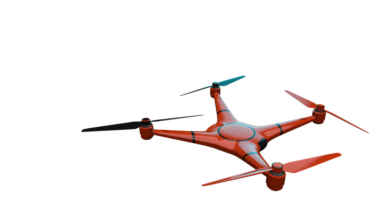
Pioneering Sustainable Soft Robotics: Biodegradable Artificial Muscle for a Greener Future
[ad_1]
An international team of researchers from the Max Planck Institute for Intelligent Systems (MPI-IS) in Stuttgart, Germany, Johannes Kepler University (JKU) in Linz, Austria, and the University of Colorado (CU Boulder), Boulder, USA, have brought sustainability to the forefront of robotics soft.
Together, they developed a fully biodegradable, high-performance artificial muscle made from gelatin, oil and bioplastics. Scientists are showing off the potential of this innovative technology by using it to animate a robotic gripper, which is especially useful for single-use applications such as garbage collection. These artificial muscles can be disposed of in a municipal compost bin and completely biodegrade within six months under monitored conditions.
Ellen Rumley, a visiting scientist from CU Boulder working in the Department of Robotic Materials at MPI-IS and first co-author of the paperemphasizing the importance of sustainable materials in soft robotics:
“Biodegradable parts can offer sustainable solutions especially for single-use applications, such as for medical operations, search and rescue missions, and manipulation of hazardous substances. Instead of piling up in landfills at the end of product life, future robots could become compost for future crop growth.”
Developing Biodegradable HASEL Artificial Muscle
The researchers created electrically actuated artificial muscles called HASEL (Hydraulically Amplified Self-healing Electrostatic Actuators). HASELs are oil-filled plastic bags partially covered by a pair of electrical conductors called electrodes. When a high voltage is applied across the pair of electrodes, the opposite charges accumulate, producing a force that pushes the oil into the area of the pocket that is free of the electrodes. This oil migration causes the sac to contract, much like a real muscle. In order for HASEL to change shape, the material used for plastic and oil bags must be an electrical insulator capable of withstanding the high electrical pressure generated by charged electrodes.
The main challenge was to develop conductive, soft and fully biodegradable electrodes. Researchers at JKU created a recipe using a mixture of biopolymer gelatin and salt that can be directly thrown into the HASEL actuator.
David Preninger, first co-author on the project and a scientist in the Soft Matter Physics Division at JKU, explains:
“It was important for us to manufacture suitable electrodes for these high-performance applications, but with readily available components and an accessible fabrication strategy.”

Image Source: Max Plank Institute
Electrical Performance and Biodegradable Plastics
The next hurdle is identifying suitable biodegradable plastics. Engineers usually prioritize factors such as degradation rates and mechanical strength over electrical insulation, a requirement for HASELs operating at several thousand volts. However, certain bioplastics show good material compatibility with gelatin electrodes and adequate electrical insulation.
One specific combination of materials allows HASEL to withstand 100,000 actuation cycles at several thousand volts without electrical failure or loss of performance. This biodegradable artificial muscle competes electromechanically with its non-biodegradable counterpart, promoting sustainability in artificial muscle technology.
Ellen Rumley describes the impact of their research:
“By demonstrating the outstanding performance of this new material system, we are incentivizing the robotics community to consider biodegradable materials as a viable material option for building robots. The fact that we achieved such great results with bio-plastics also hopefully motivates other materials scientists to create new materials with optimal electrical performance in mind.”
Future Prospects and Applications
The development of biodegradable artificial muscles opens new doors for the future of robotics. By incorporating sustainable materials into robotic technology, scientists can reduce the environmental impact of robots, particularly in applications where single-use devices are common. The success of this research paved the way for exploration of more biodegradable components and fully eco-friendly robot designs.
Potential applications for biodegradable soft robots go beyond waste collection and medical surgery. These robots can be used in environmental monitoring, agriculture and even consumer electronics, reducing the burden on landfills and contributing to a circular economy.
As the research continues, the team plans to further refine the materials and processes used in making biodegradable artificial muscles. By collaborating with other experts in materials science and robotics, they aim to develop new technologies that will drive the field of sustainable soft robotics forward. researchers hope to encourage the adoption of biodegradable materials in various industries, thereby encouraging a more environmentally conscious approach to technology development.
This groundbreaking work from an international research team is an important step towards a more sustainable future for soft robotics. By demonstrating the feasibility and performance of biodegradable artificial muscles, they pave the way for further advances in green technology and inspire the robotics community to consider sustainable alternatives to their creations.
[ad_2]
Source link






